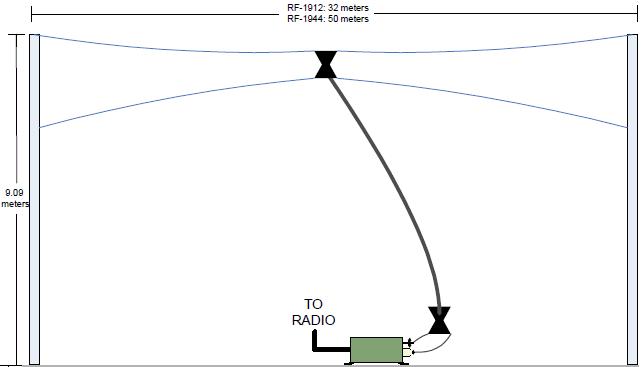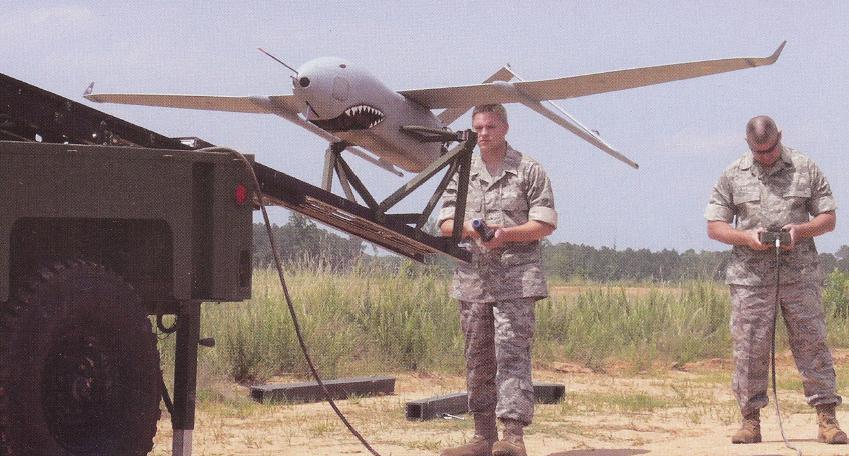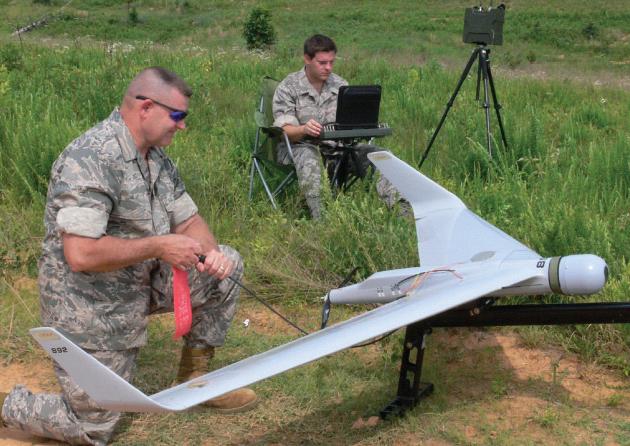This summarizes a selection of applications for the Experimental Radio Service received by the FCC during March 2011. These are related to VHF propagation, satellite communications, TV white space, military communications, radar, software defined radio, aircraft broadband services, adaptive networks, peer-to-peer networks, intermodulation testing, unmanned aircraft systems, maritime broadband communications, border surveillance, target acquisition, and millimeter wave propagation. The applications are sorted by frequency.
Archive for the ‘Public Safety’ Category
Experimental Radio Applications at the FCC
Tuesday, March 15th, 2011This summarizes a selection of applications for the Experimental Radio Service received by the FCC during February 2011. These are related to cognitive radio, land mobile, TV white space, unmanned aircraft systems, satellite terminals, ultra-wideband, wildlife tracking, interference detection, and radar. The descriptions are sorted by frequency.
Experimental Radio Applications at the FCC
Saturday, August 14th, 2010This summarizes a selection of applications for the Experimental Radio Service received by the FCC during July 2010. These are related to high-frequency data, military communications, environmental data collection, synthetic aperture radar, WiMAX, sensor networks, interference-resistant communications, LTE, rail transportation, air traffic control, white space networks, and RFID.
- Harris filed an application (with supporting exhibits) for experimental license to operate on various frequencies between 3 and 15 MHz to test an experimental high-frequency wideband waveform that is intended to operate at either 12 kHz bandwidth or 24 kHz bandwidth to allow faster data transfer via high-frequency communications.
- Harris also filed an application (with supporting exhibit) for experimental license to operate on 4.94-4.99 GHz in support of development of US Army’s Warfighter Information Network: Tactical (WIN-T) and Future Combat Systems (FCS) programs. Equipment is to consist of the HNRe2 Highband Network Radio, manufactured by Harris. Harris says the HNRe2 is comprised of four elements: 1) the Baseband Processing Unit, 2) the Highband RF Unit (HRFU), 3) an Inertial Navigation Unit (INU), and a GPS device. The HRFU further consists of an upconverter, a High-Powered Amplifier (HPA), a Switched Beam Antenna (SBA), a Low-Noise Amplifier (LNA), and a downconverter). The test network will consist of five fixed nodes and one mobile node. The FCC has asked Harris to justify extended testing in a band that is primarily allocated for non-government public safety use.
- Canon U.S.A. filed an application (with supporting exhibits) for special temporary authority to operate wireless devices in support of a private technology and product exhibition from September 1, 2010 through September 3, 2010 at the Jacob K. Javits Convention Center in New York, NY. Canon is planning to import many wireless devices from Japan to be used with displays during the exhibition. These devices are not FCC compliant and not expected to be FCC compliant until after the exhibition. Frequencies requested include 315.0-315.7 MHz, 2.40-2.50 GHz, 5.18-5.67 GHz, and 61.6-62.5 GHz. This application was granted on August 11.
Experimental Radio Applications at the FCC
Sunday, July 4th, 2010This summarizes a selection of applications for the Experimental Radio Service received by the FCC during June 2010. These are related to aircraft systems, WiMAX, sports telecast support, public safety communications, tactical cellular service, medical telemetry, satellite, antennas, radar, white-space devices, weapons telemetry, spacecraft communications, and broadcasting.
- AAI/Textron Systems Corporation filed an application (with supporting exhibits) for experimental license. The company wants to test its Shadow 200, Aerosonde, Orbiter and other unmanned aircraft systems. This is related to work for the United States Marine Corp. Operation is to be on 310-390 MHz, 902-928 MHz, 1090 MHz, 1350-1390 MHz, 1700-1859 MHz, and 4400-4999 MHz. Transmitting equipment is manufactured by Microhard Systems Corporation, Free Wave Technologies, Advanced Microwave Products, Global Microwave Systems, and Microair Avionics.
FCC staff has asked for several items of information before approving the application. The FAA operates in the frequency bands 328.6-335.4 MHz, 1090 MHz, and 1215-1390 MHz; FCC staff asks for coordination of these bands with the FAA Regional Office. In addition, the frequency bands 225-328.6 MHz and 335.4-399.9 MHz are used for military purposes, and the applicant was asked to coordinate with NTIA’s Interdepartment Radio Advisory Committee (IRAC).
- AAI/Textron Systems Corporation also filed an application (with supporting exhibits) for special temporary authority to operate on 420-450 MHz and 2000-2400 MHz for a government project apparently involving the Orbiter miniature unmanned aircraft system. There is not much information about the proposed operation, and FCC staff has asked for more details.
In correspondence to the applicant, FCC staff notes that the “Aerospace & Flight Test Radio Coordinating Council (AFTRCC) oversees the frequency bands; 1435-1525 MHz, 2310-2320 MHz, and 2345-2390 MHz. These frequency bands need to be removed or need to be prior coordinated.”
- Sportvision filed an application (with supporting exhibits) for special temporary authority for testing of an automobile race track wireless data system that is to provide data communications between vehicles in a race track and one or more fixed base stations installed along a track. Operation is to be on 2395-2400 MHz.
One application seen for this system is video image enhancement for television broadcasting of automobile racing events. The would allow television viewers to see, displayed on screen, the real-time location of cars during a racing event.
The vehicles would be equipped with GPS receivers and other sensors that generate a data packet every 200 milliseconds. The wireless system would collect those packets and deliver them to a control station in real time. “The radio itself is a direct sequence spread spectrum unit, using production radios for 2.4 GHz. The system may ultimately be deployed on an unlicensed basis in the 2.4 GHz band or elsewhere, but the high noise levels in that band in the test locations (commercial automobile race tracks) are unsuitable for development and testing of the product.”
“An Intersil baseband processor performs the Direct Sequence modulation and demodulation. It is part of a five-chipset developed for the 802.11b standard. It uses 1/4th of the standard 802.11 speed resulting in a narrow occupied RF bandwidth.”
The frequency band requested is allocated on a primary basis to the Amateur Radio Service, and coordination is to be performed with the ARRL. This application was granted on June 4.
Experimental Radio Applications at the FCC
Thursday, June 3rd, 2010This summarizes a selection of applications for the Experimental Radio Service received by the FCC during May 2010. These are related to WiMAX, sensors, SAW devices, radio-location, ultra-wideband, white space, aircraft passenger communications, landslide monitoring, collision avoidance radar, mobile DTV, LTE, Inmarsat handsets, highway rock-fall monitoring, HF communications, spacecraft link characterization, and interference into broadband access.
- Polytechnic Institute of NYU filed an application (with supporting exhibit) for experimental license to conduct a network research project using WiMAX on 2535-2540 MHz. This is part of the nationwide Global Environment for Network Innovations (GENI) project, a suite of infrastructure that will support experimental research in network science and engineering. GENI is supported by the National Science Foundation and managed by the GENI Project Office at BBN Technologies.
- Mnemonics, Inc. filed an application (with supporting exhibits) for experimental license to operate in support of a research project that is to develop and demonstrate the viability of wirelessly extracting measured data from a network of passive surface acoustic wave (SAW) sensor devices. This sensing technique is said to have several advantages over existing sensors, including no wired connections needed to extract data, no power requirements, operation up to 1000 degrees C., and sensor cost in-quantity in the tens of cents each. Operation will be on 915 MHz.
How to get grant money for public safety radio
Tuesday, March 2nd, 2010“When you read the application and fill it out, give them what they want.”
Urgent Communications has tips (registration required) from a grant-writing consultant on getting grant money for public safety narrowbanding.




